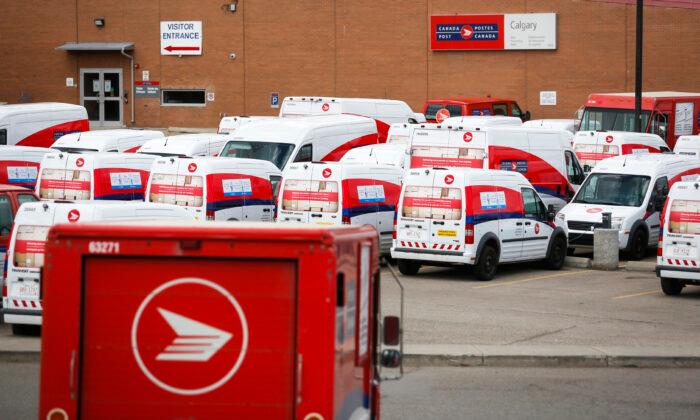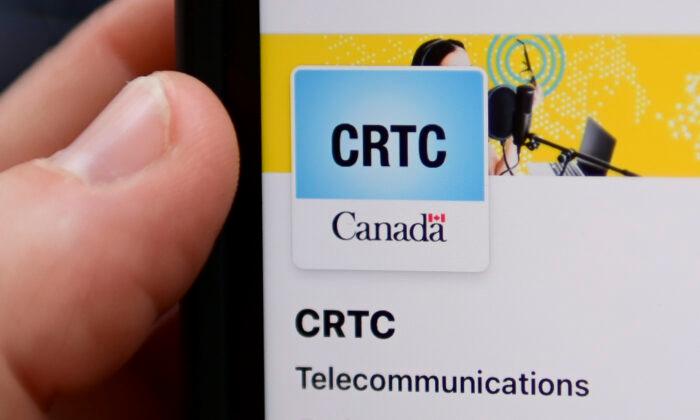In an ironic twist, Canada Post is facing such difficult financial challenges that it is now facilitating loans, but some say this will do little to remedy the Crown corporation’s problems and what’s needed instead is an overhaul.
Pension Burden Begs Structural Changes
In 2016, a task force examined the idea of mail banking as put forward by the Canadian Union of Postal Workers but determined that it would only generate marginal revenue. In its report, the four-member panel suggested that distribution of marijuana, less frequent door-to-door delivery, and more community mailboxes could help the mail carrier, whose pension liabilities had already reached $8.1 billion.“Although operational viable options have been presented, they alone are insufficient to bridge Canada Post to a financially sustainable future,” the report concluded. “Other fundamental and transformational changes must be brought to bear.”
In an interview with The Epoch Times, Lee said there’s neither a market for nor much benefit to be had from the new loan service.
“According to the Canadian Bankers Association, 99 percent of Canadians have a bank account. That means 1 percent of Canadians do not have a bank account, which is an infinitesimally tiny, tiny number. And so the idea that there are large numbers of people under-banked is factually false,” he said.
“All the post office is doing is acting as another channel to bring in customers for the TD Bank. ... They can walk in just as easily at any TD Bank or pick up the phone. That’s what’s so preposterous about this, suggesting that you can’t get this service in the rural areas.”
Lee says the new initiative has public relations value for TD Bank and for a government that pledged to innovate to help Canada Post. However, he says the volume of cheques in the mail and handwritten letters has “collapsed” in the digital era, leaving only one viable option.
“Canada Post is going to have to reinvent itself as the preferred partner of all the e-commerce companies, whether it’s Amazon or whomever, because all those products ordered online have to be physically shipped,” he said.
‘Political Interference’
Ian Madsen, senior policy analyst for the Frontier Centre for Public Policy, likens Canada Post’s foray into mail banking to the CBC’s use of internet streaming services. He says both represent a vain effort to remedy government subsidies.“I don’t have a great objection to this sideline, but it seems to be another instance of where a Crown corporation is not really entirely commercially viable and is desperately flailing around looking for something to glom onto to get a little more cash coming in,” Madsen said in an interview.
“If it wasn’t for the pension thing Canada Post could be, with some tweaks, moderately profitable, but the government and everyone involved has to be realistic and pragmatic about it.”
Madsen points to the privatization of postal services in the U.K. and Netherlands as examples of successful government divestment. But he believes that so long as politicians dictate operations, necessary changes can’t happen.
“Politicians interfere with the running of these things,“ he said. ”But when you have political interference, it becomes very hard for the managers to make logical and pragmatic decisions.”
“They need to restructure it, put it on a proper actuarial basis. And if there’s a gap there, the government just has to eat it,” he said, giving the case of Atomic Energy of Canada Limited (AECL) as an example.
“Atomic Energy of Canada Limited had huge liabilities for reactor and waste disposal, clean-up, and reactor decommissioning, and there was no way that could happen. [In 2011, SNC Lavalin] effectively bought AECLs assets, but the liabilities remain with us, which are very, very gradually glacially being amortized annually and paid down by we, the taxpayers,” Madsen explained.
“There’s a lot of wishful thinking involved with these Crown corporations, and sometimes with publicly traded corporations, that certain liabilities or problems are just going to be magically remedied, and that is not the case.”





